Friends:
It’s been a busy week as I continue to update my 4000 sq. ft vegetable garden. Over the past two summers, I have replaced the rotting wooden raised beds with metal beds. The final bed was installed last week! Now I am weeding the garden paths, a tedious and slow process, laying landscape fabric, and then dumping inches of wood chips on them. Fortunately, the weather has been perfect: cool and breezy, but my body tells me when I've had enough for the morning.
In the afternoons, I have been working on an essay for submission to the Story Circle Network’s annual anthology publication, Real Women Write. This year’s theme is “In the Garden,” and it took a while to settle on a theme. I had a long list of different ideas for the essay. It has evolved into a deeply personal essay.
This week, I offer a photo essay of a week in early summer.
Unlike much of North America and Europe, the PNW has been cool, sunny, and breezy. This morning, it was 40°F! We had a couple of days in the high 90s, and this young doe appreciated the bird bath, returning to it several times over the two days. The native plant hedgerow is next on the to-do list: weeding, mulch, and wood chips.
*My old iPhone is slowly dying, and I have ordered a new Pro model, which is primarily a camera that also functions as a phone. I look forward to sharing better photos and videos with you.
Queen Anne’s Lace, AKA Wild Carrot (Daucus carota), is the ancestor of our cultivated garden carrot. Named after Queen Anne II, folklore claims that the red or purple floral centers represent a spot of blood from a finger prick while she was tatting white lace. Queen Anne bore 18 children, and only one survived, so the red center is sometimes noted as a symbol of her great sorrow.
It’s a little blurred, but I caught a bumblebee sleeping in on an early morning walk. The flower is White or Birchleaf Spirea (Spirea betulifolia).
I transplanted my strawberries and rhubarb last fall into a new metal bed with drip irrigation, and they have thrived. I head out early in the morning to pick the ripe berries before the birds get them.
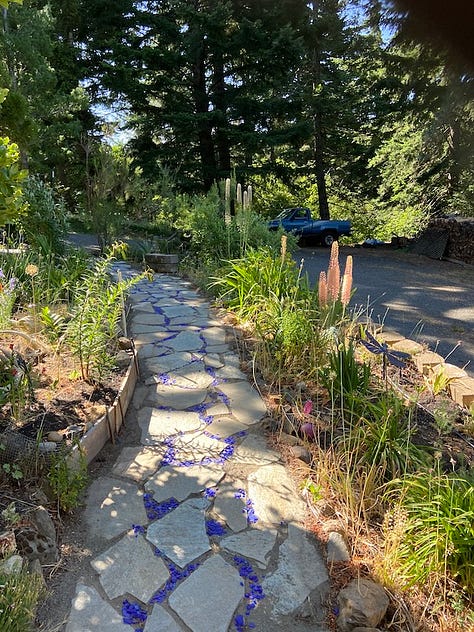
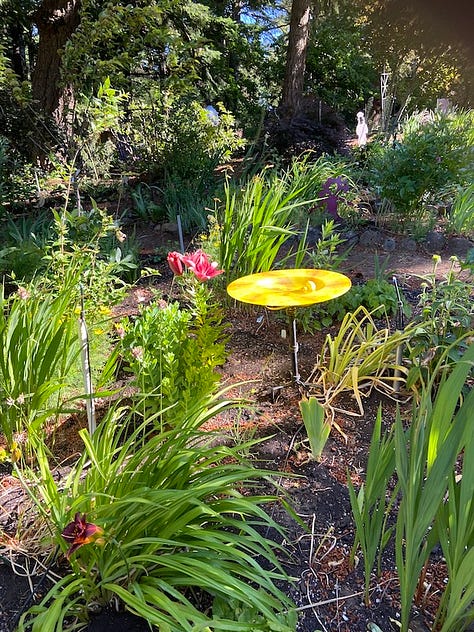

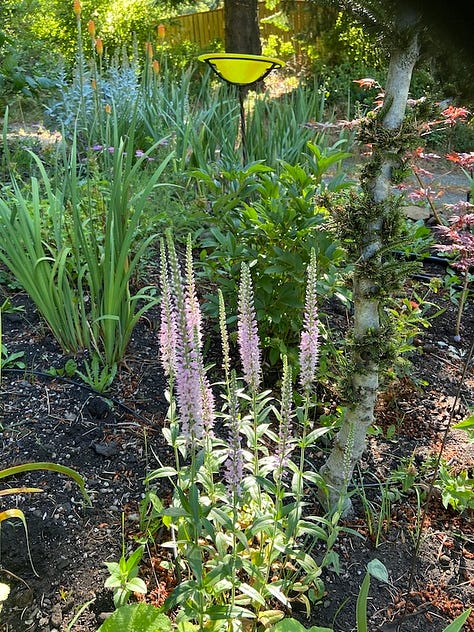
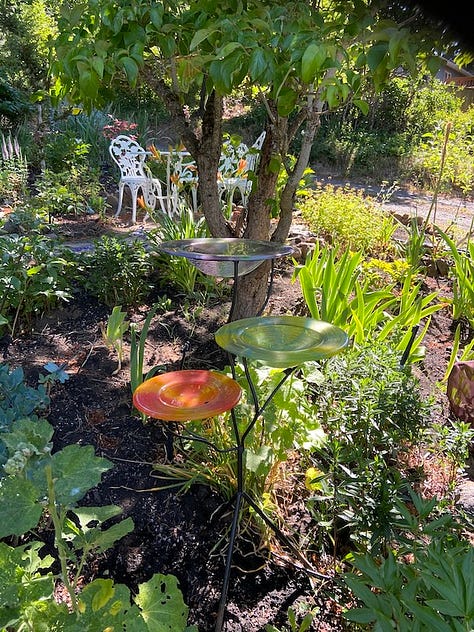
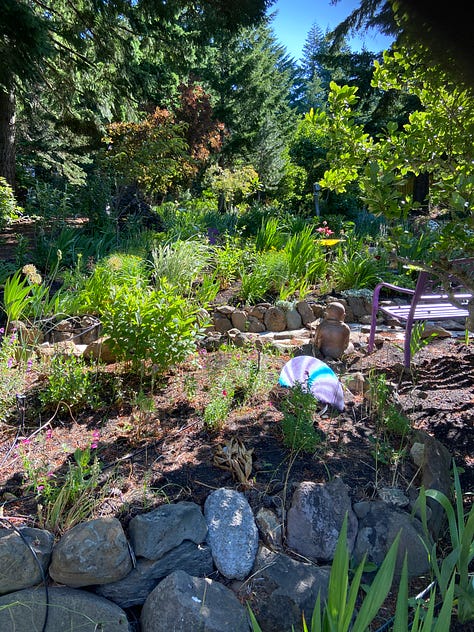
My friend, Linda Steider, who shares her professional wildlife photos for my Wild Stories essays, hosted an early morning garden party. The cold mountain winds also attended, and jackets and long pants were worn by all. Linda wanted to honor two people whom she hired to clean up her weedy garden, and she invited them to the party so we could meet them. I suspect several of us will be hiring them to work in our gardens. The mannequin is named Greta the Garden Goddess. The beautiful glass birdbaths were created by Linda, who was a glass artist for 20 years.
Ocean spray, AKA creambush or ironwood (Holodiscus discolor), is a native shrub that produces bright white flowers that resemble the foamy layer of ocean waves.
The opium poppies (Papaver somniferum) self-seeded abundantly throughout the garden last year, and this year were filled with bumblebees and honeybees harvesting pollen for several weeks. Though the paper-like blooms are short-lived, the opium poppy produces a unique seed pod that holds the edible seeds.
The fruit season has arrived! I live in a valley rich with orchards, berry farms, market farms, and vineyards. Our region has multiple farmers’ markets, but I have been using the Gorge Farmer Collective, a farmer-owned and operated local food marketplace. Each week, I can browse their website for seasonal offerings of fresh vegetables, fruits, herbs, meat, flowers, and value-added products, such as jams and kombucha, all of which are grown or crafted by local producers. I place my order online and then pick it up at our local grange on Wednesdays. Berries are a worthy investment in good nutrition, and I eat a cup of them each day. Each year, I purchase several flats of blueberries, blackberries, and several pounds of cherries, which I freeze for future use.
In August 2024, I wrote about the benefits of supporting a local food economy in Gathering the Abundance.
Gathering the Abundance
I confess that one of my obsessions is food. I think about it every day of the year. I eat it, grow it, and preserve it. I read about it (don’t even ask how many cookbooks I have) and occasionally write about it. I traded my predictable suburban life for an unpredictable rural homestead lifestyle, partly because I wanted to spend more time growing food and medicinal herbs. When I think about my valued assets, I start with my knowledge and experience in growing and cooking food. If the shit hits the fan, I will be out in the garden.
Because I live in a forested area, I seldom see spectacular sunsets, but occasionally I wake up to a sunrise like this. Standing in my pasture in my robe and slippers at 5 a.m. I watched the sun slowly rise over the horizon, painting the clouds shades of pink, orange, and red. My dog, Beau, who rises with me, was a bit confused at my presence in his pasture, or perhaps embarrassed, by my early morning attire.
Thank you for being here. If you’d like to support my work, you can do so by:
Liking and restacking this post so others are encouraged to read it.
Share this post via email or on social media.
What’s blooming in your area?


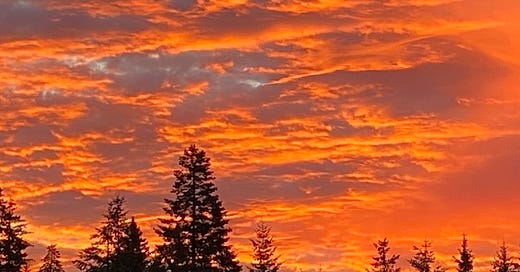


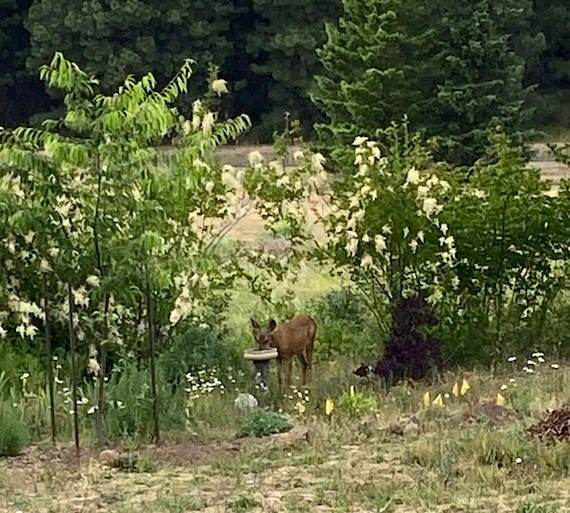
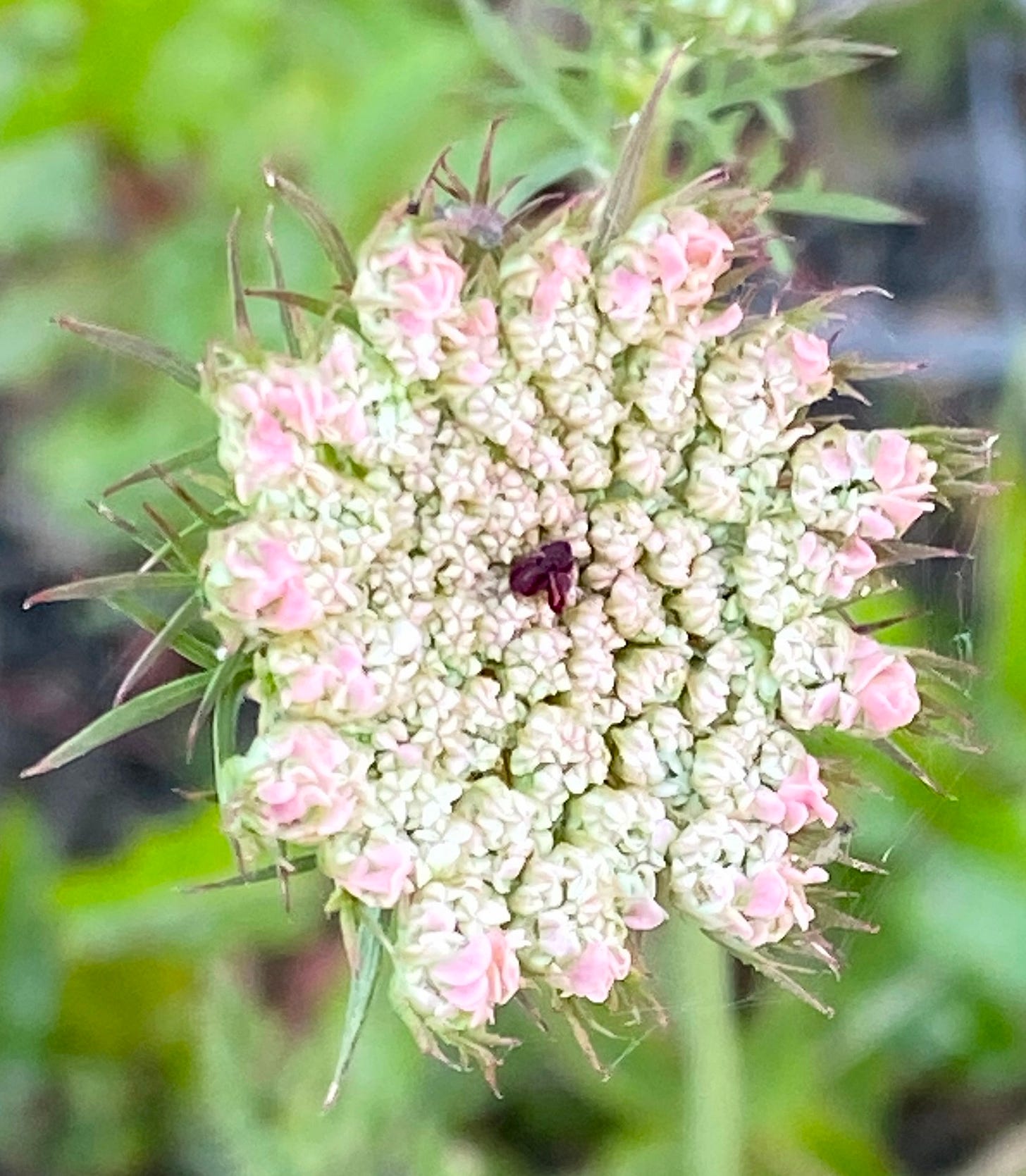
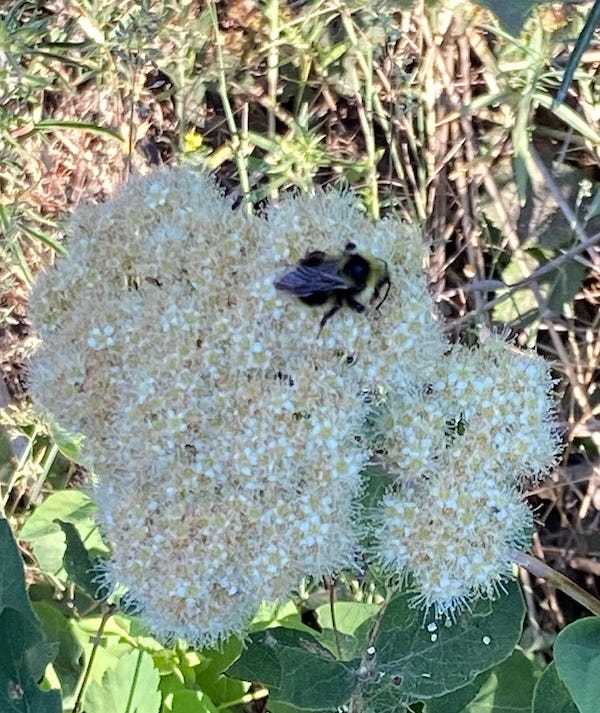

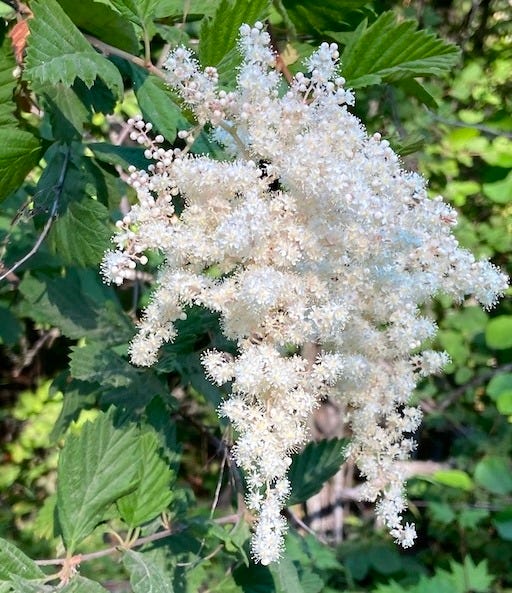
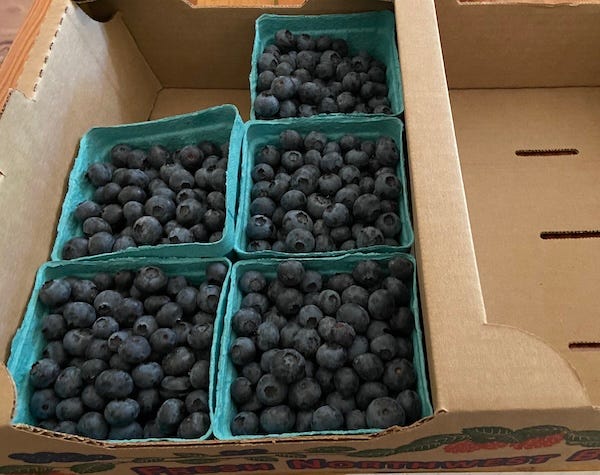
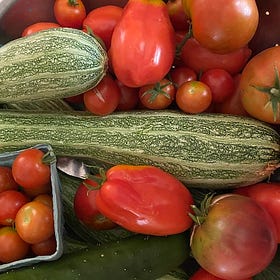

I think you've found your niche on Substack, Sue! Congratulations. And thank you for sharing the photos from your garden and your friend's garden, plus that stunning sunrise. Wow! I especially love the "femmequin" from your friend's garden--what a great idea! (Mannequin comes from the Dutch word for "little man," and since your friend's one is definitely female, I changed the word to honor that.) Blessings to you!
The first edition of "For the Love of Nature" is delightful, Sue! In echo of Susan Tweit's comment, I agree that you've found your niche. Sunrises are the best way to begin the day (well, neck and neck with a great cup of coffee and book). I also miss living where I can see them clearly. Someday. Your garden is lovely; thank you for the words and photos. Bumblebees are so cute to catch sleeping!
What is blooming here?
Yarrow
Purple Asters
Oregon Sunshine